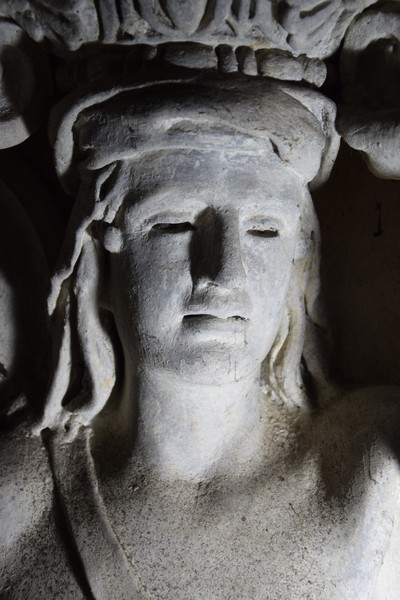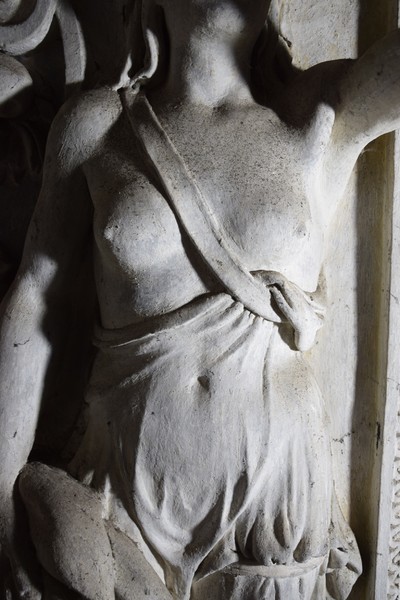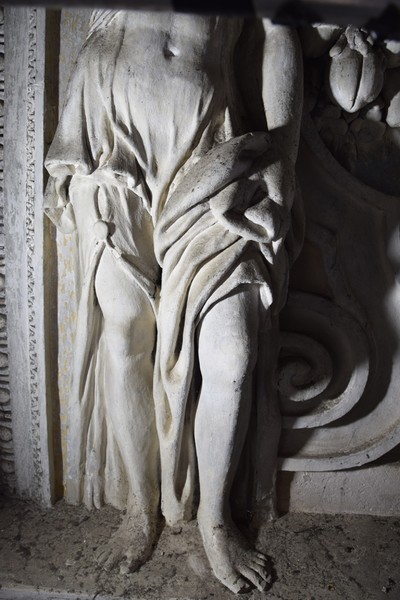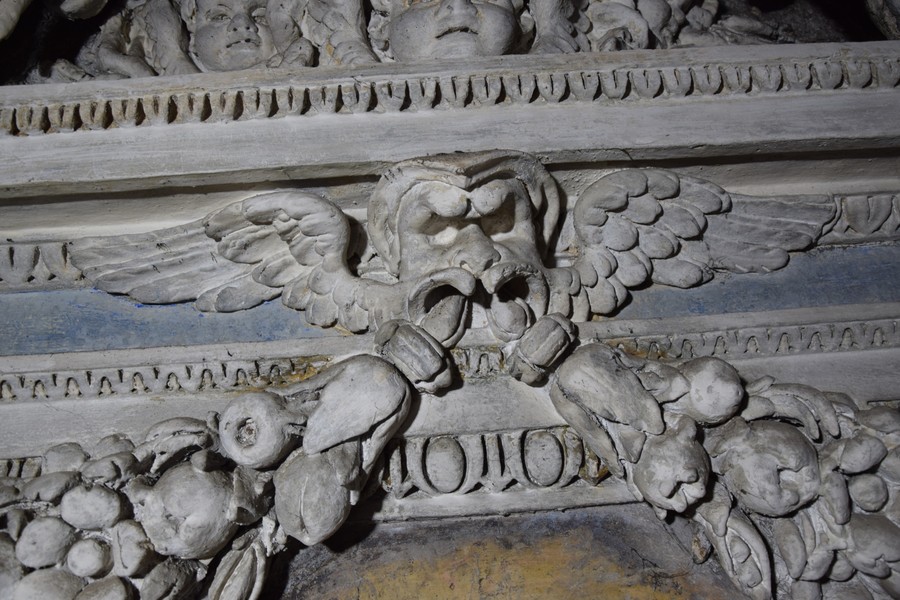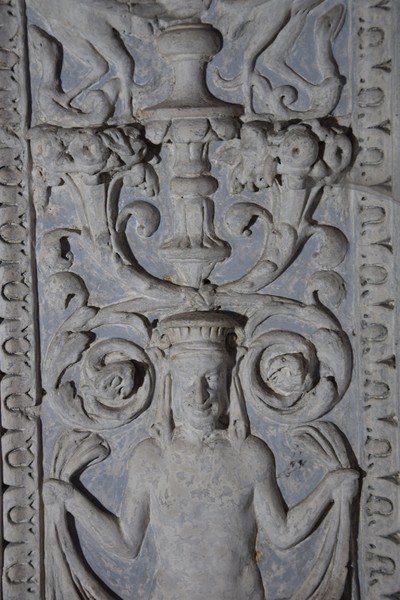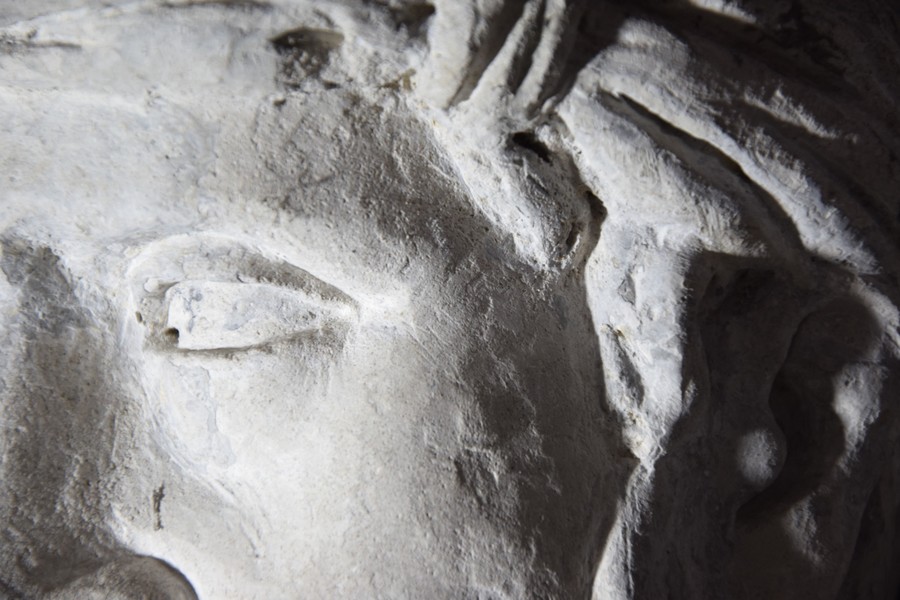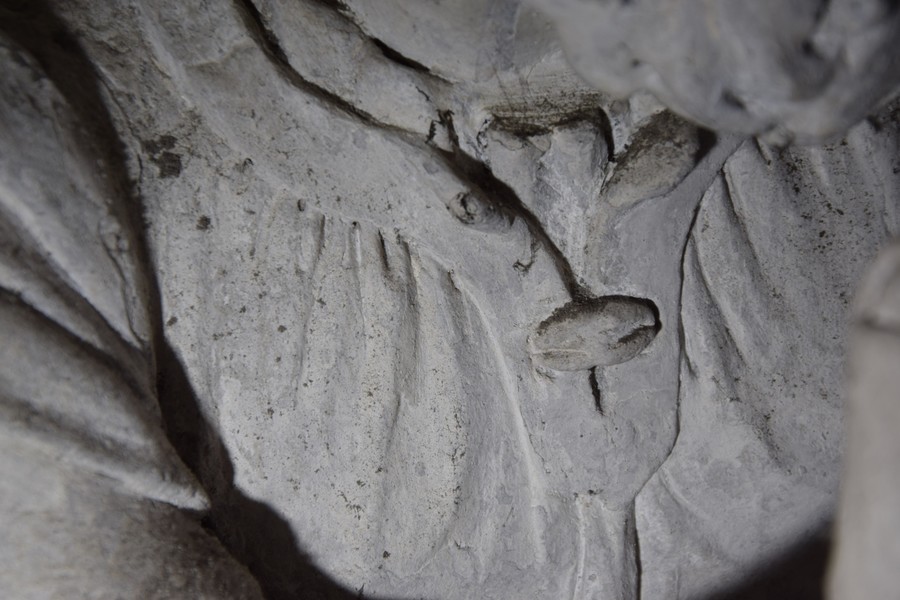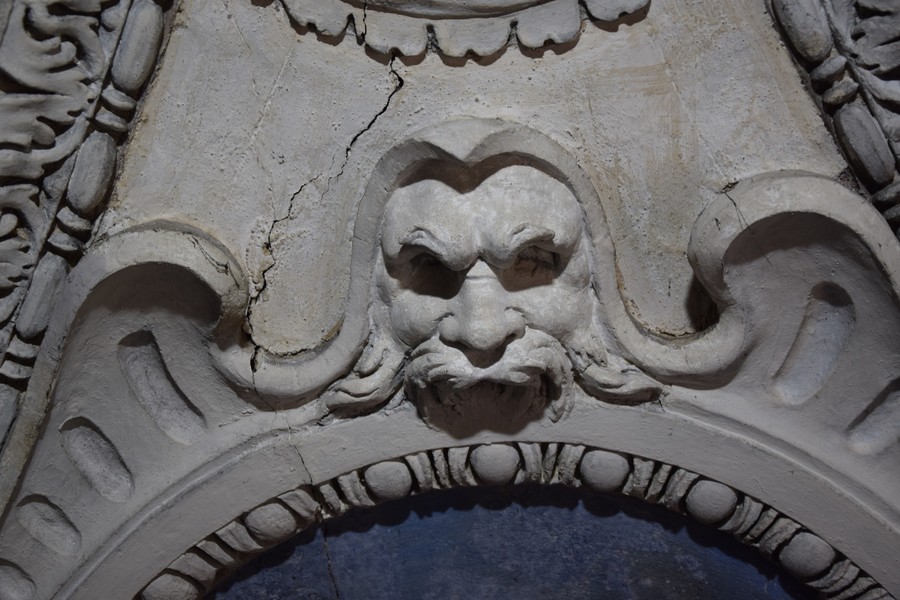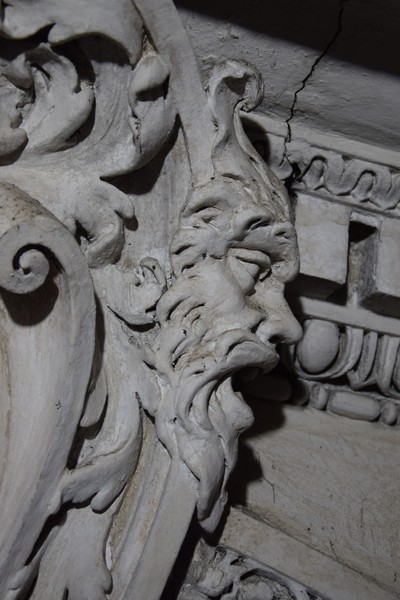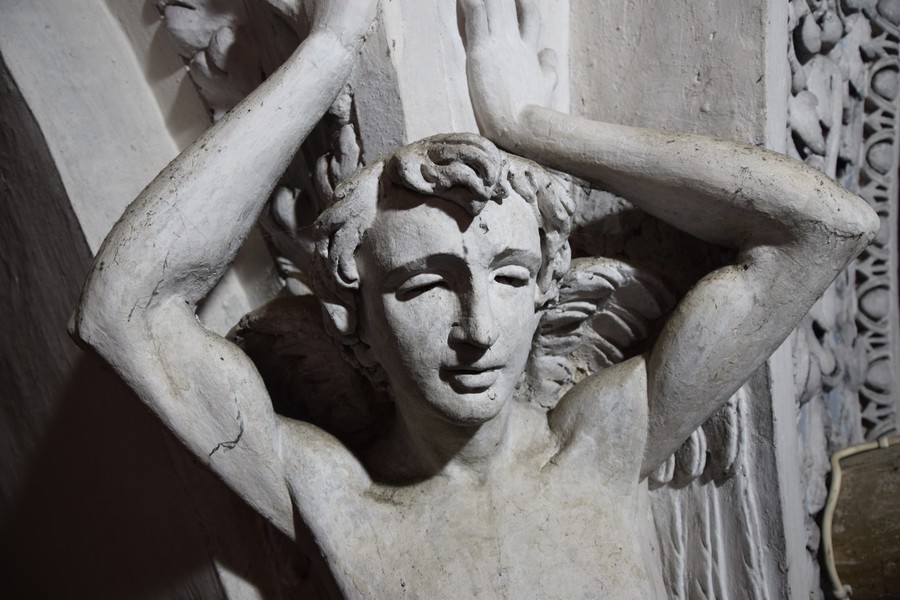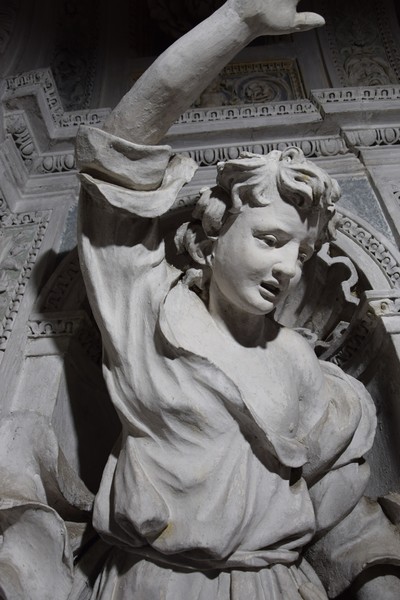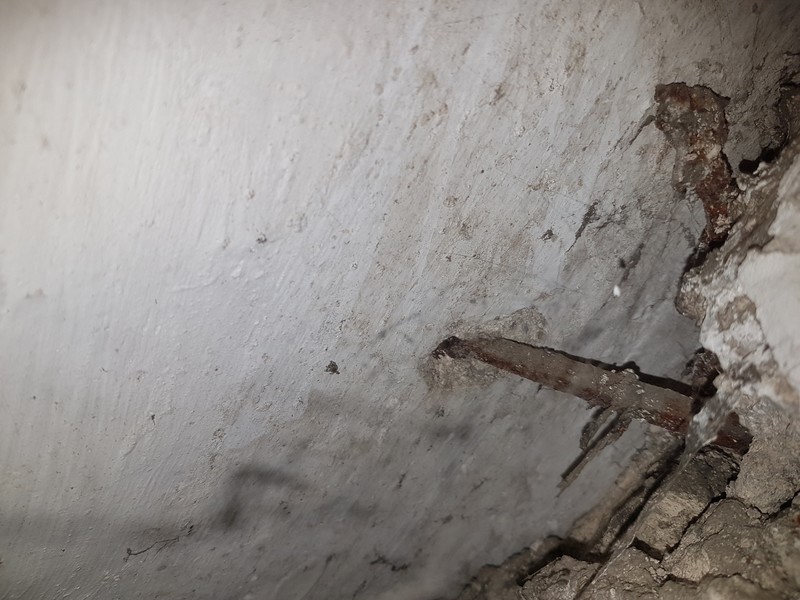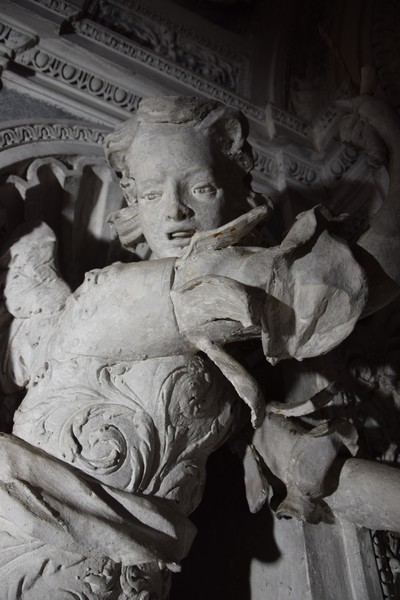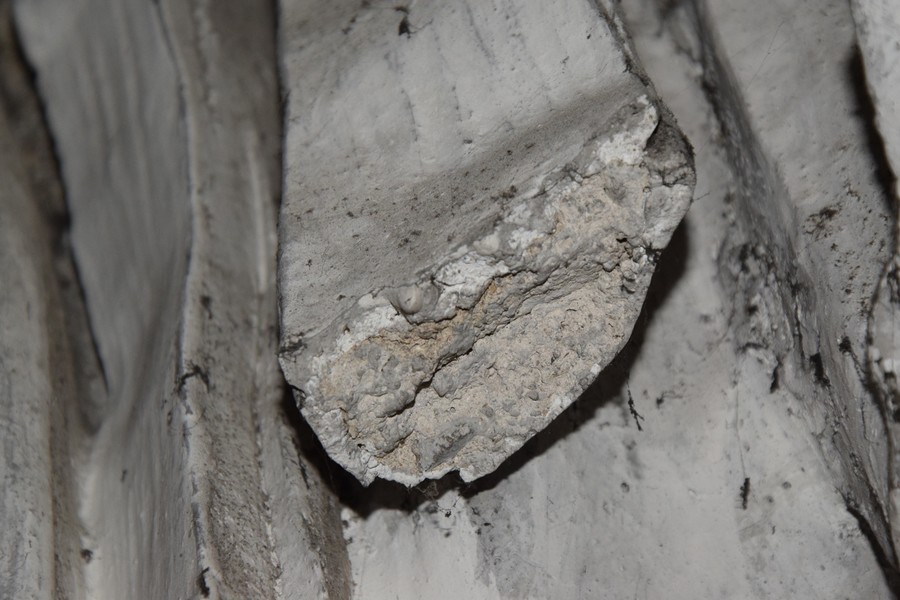Chapel of the Rosary
The relief of the decorations is not very pronounced, meaning that the works could be executed without particularly complex supports or anchorages. Even the nearly full-round statues, with regular structure, stable centre of gravity and without very strong projections, are solidly attached to the back wall: the supporting structures are in fact mainly composed of bricks anchored in the masonry, and the use of iron reinforcements is very limited.
The stuccos were made with a body mortar of lime and unsorted sand, without gypsum, and over this a very thin finishing mortar of lime and marble powder. The skilfully developed modelling was done with wooden or metal spatulas and directly with the fingers, as if working in sculptural clay. In this regard, we can see the manner of making the eyes without pupils, the eyelids and the lips of the angels and caryatids, with their soft, rounded shapes and pronounced sculptural relief (Fig. 1, 2, 3). These figures have poses and facial features that recall classical statuary, with refined composure particularly evident in certain anatomical parts, such as the ribs and abdomens of the nudes (Fig. 4, 5). The anthropomorphic forms and grotesques in the frames and cartouches show a persistent mannerist taste (Fig. 6, 7). To increase the naturalistic effect of some details, as in the zither of the right Prophet, the plasterer used wooden pegs (Fig. 8, 9).
The finishing mortar is free of cracks and craquelure, and the final workmanship, although difficult to read due to the later applications of washes, featured refined smoothing, using a brush to uniformly regularise the surface (Fig. 10).
The details of execution vary: the faces and large draperies are smoother, the hair and beards are strongly incised, and the wing feathers are outlined with short strokes of the wooden spatula. The modelling is painstakingly executed even in barely visible parts, such as the feet of the figures above the entablature and in the trimmings of clothing (Fig. 11, 12).
Overall, the stuccos appear executed uniformly, although several hands can be recognised: compare, for example, the figures of the saints and prophets, almost wooden and not very expressive, with the intense dynamism of the angels and caryatids.
Finally, the refined stucco decoration is further complemented by the painting of the nave wall next to the chapel, in imitation of real stuccos (Fig. 13, 14).
Chapel of St Domenic Soriano (Scala Chapel)
The analysis of the stuccos reveals many similarities with the Rosary Chapel. The modelling of figures seems done with equal rapidity, worked with the hands and finished with spatulas, although the marks are difficult to discern due to the layering of plaster washes. The grotesques in the bas-reliefs have the same detailed refinement, and we see the same anthropomorphic insertions of masks in the cartouches and in the volutes, of Mannerist taste (Fig. 15, 16, 17).
The telamons at the base of the vault pendentives have facial features worked in ways similar to those of the figures in the Rosary Chapel (Fig. 18), with the same half-closed eyes, fleshy eyelids and lips, and also showing the same attention to anatomical construction. The musculature of these telamons is modelled with extreme realism, just as for the caryatids in the opposite chapel: soft, at times almost sensual, thanks also to the use of delicate, thin draperies that cover the bodies only partially, enhancing the forms.
The frames with serial motifs such as beads, ovules and palmettes, although with few undercuts, are formed with deep incision and pronounced sculptural relief (Fig. 19). The material character is hard and tenacious and there are very few mould marks. This is an unusual aspect, as is the development of the modelling using a single mortar application. The cover meter revealed no traces of nails, typically found in the more prominent parts of rosettes and volutes.
The intervention of at least one artist in a later period is suggested by certain technical and stylistic elements that are decisively discontinuous. Unlike all others, the two figures in the side niches of this chapel show a marked and fully baroque dynamism. To achieve the accentuated sculptural relief and greater three-dimensional effects, the stuccatore formed articulated support structures composed of bricks and metal brackets (Fig. 20) and reduced the surfaces joining with the wall to a minimum (Fig. 21). The body mortar of these two statues is composed of a coarse brownish-yellow mixture, applied in rather consistent average thickness of around three centimetres. The finishing mortar is also thick, around one centimetre, essentially composed of lime and marble powder (Fig. 22). The surface of the robes is enriched with refined decorative details, as in the armour of the Archangel Michael, with long, ruffled and disordered pleats that add further emphasis and drama to the figures (Fig. 23).
















